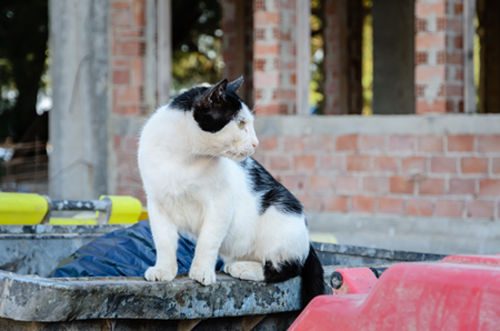Aug 25 2014 Intersector collaboration brings “Trap-Neuter-Return” initiative to Columbus, Georgia
Goal is to “save the community’s cats”
 Best Friends Animal Society, the national pet supply chain PetSmart, and the local Animal Care & Control Center have teamed up in Columbus, Georgia to “save the community’s cats.” This innovative collaboration among government, business, and non-profit sectors will launch a Trap-Neuter-Return initiative whose goal is to prevent the spread of disease and manage the growth of an estimated 100,000 free-roaming cats in the town.
Best Friends Animal Society, the national pet supply chain PetSmart, and the local Animal Care & Control Center have teamed up in Columbus, Georgia to “save the community’s cats.” This innovative collaboration among government, business, and non-profit sectors will launch a Trap-Neuter-Return initiative whose goal is to prevent the spread of disease and manage the growth of an estimated 100,000 free-roaming cats in the town.
“Community cats exist because people abandon pets, many of which are not spayed or neutered,” said Columbus Mayor Teresa Tomlinson in a press release announcing the initiative. The intersector partnership hopes to bring in 6,000 of those free-roaming community cats over three years. Once trapped, cats will be spayed or neutered and vaccinated, then returned to their outdoor homes, according to the Columbus Ledger-Enquirer, which recently profiled the initiative.
Through the partnership, Best Friends Animal Society and PetSmart Charities will invest an estimated $600,000 to pay for “one full-time staff member to run the program, a transport van, spay/neuter surgeries and other vet costs, Trap-Neuter-Return program supplies, marketing support, and staff training,” reported the Ledger-Enquirer. The partner groups will also work with several other local animal welfare organizations. Columbus is one of only three sites chosen nationally by Best Friends Animal Society and PetSmart Charities.
One of the key tactics employed in this collaboration is the determination of an individual or organization who is responsible for coordinating tasks that allow the collaboration to progress — a technique The Intersector Project Toolkit refers to as Identify a Manager. In this collaboration, Columbus’ Animal Care and Control Center acts as day-to-day administrator of the initiative, employing the staff member funded through the collaboration, and implementing the Trap-Neuter-Return activities throughout the community. Having a single person, a body of managers, or an organization act as a single point of accountability can ensure structure and instill confidence in the collaborative process.
For another example of an intersector collaboration that aims to assist homeless animals, see our case study, Saving Shelter Animals in NYC.
